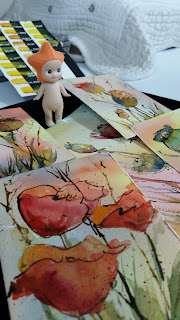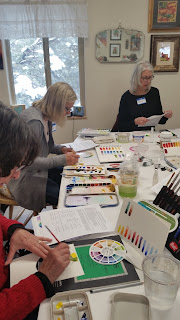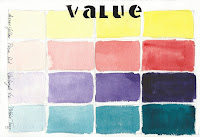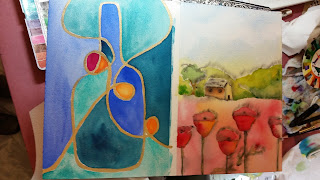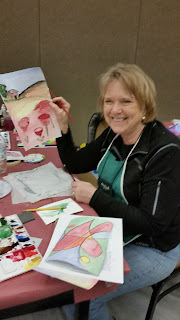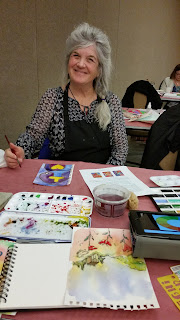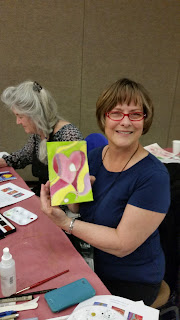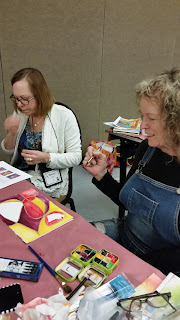My All About Color class has just started in my Tumalo Art Studio. We are learning how to use the colors on our watercolor palettes and the color wheel to create harmonious paintings. Since I am a color artist this is always one of my favorite classes to teach!
I would like to share with you some ideas over the next few weeks on how you can learn to get to know the colors on your palette and use the more effectively.
Here is my first suggestion – Make a painted color swatch of each of the colors on your palette. Label them with the manufacturer’s name, the pigment number and the light fastness. Color charts are fun and relaxing to do!
1. For the manufacture’s name, I use abbreviations such as DS for Daniel Smith and WN for Winsor Newton.
2. The pigment number can be found on the tube and also can be found on art supply web sites. For
Winsor Green, Blue Shade, the pigment color is PG37. I love to collect this information because as it turns out, Winsor Green, Blue Shade is the same pigment as
Daniel Smith’s Phthalo Green, Blue Shade. I don’t need them both on my palette.
3. Light Fastness. This will tell you how permanent the pigment color is and it’s resistance to fade or change over time.
Here are some photos of our class working on their color charts.








